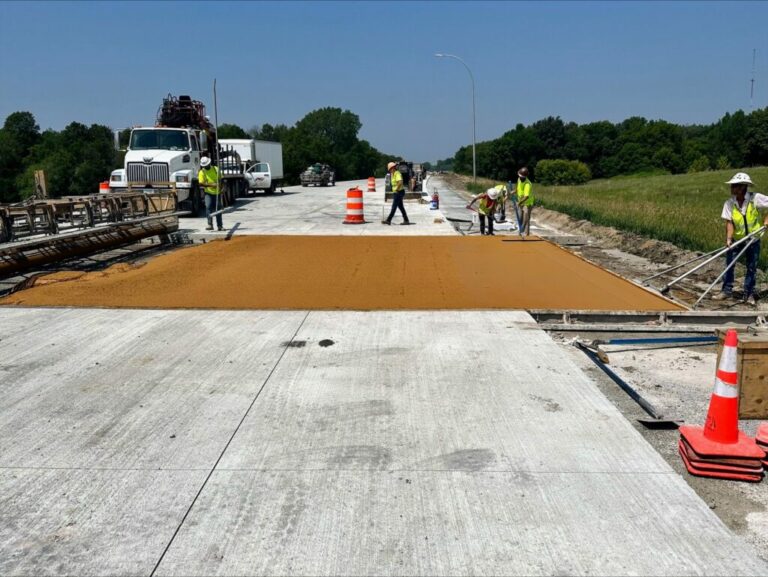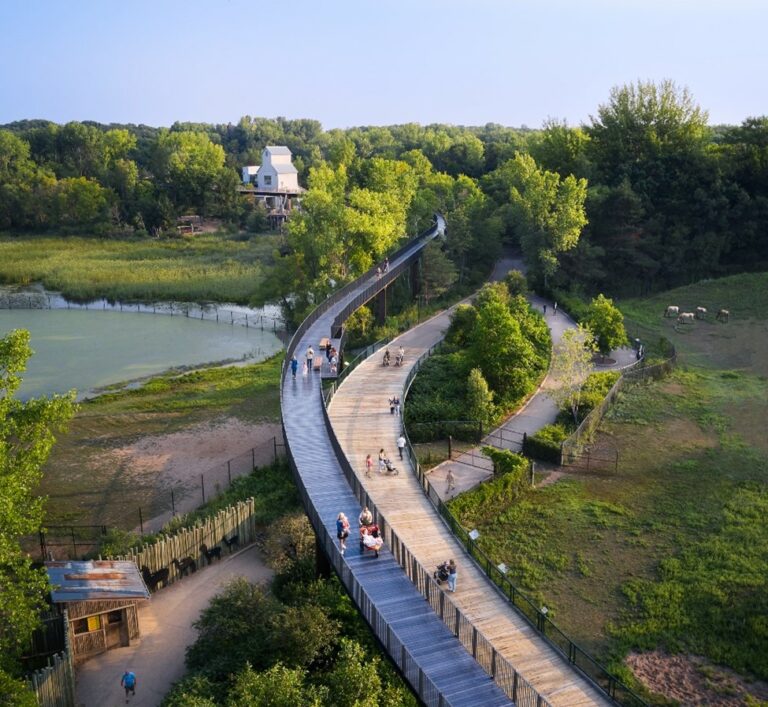The I-90 Dresbach Bridge over the Mississippi is a heavily used commuter route for travelers in the La Crosse / La Crescent area, an important regional connection, and a part of the nation’s longest (coast to coast) interstate highway (I-90).
Original bridge design details
Originally built in 1967, the 3,497-foot steel plate girder bridge had been rated as “fracture-critical” so was high on the list of bridges needing to be replaced. In addition, the bridge had narrow shoulders that caused lane closures when vehicles were stranded or during routine maintenance operations. The interchange geometry was also an issue, creating difficult and unsafe traffic movements.
Details of the new I-90 Dresbach Bridge and its improved interchange
The bridge has now been completely replaced and was opened to traffic in October 2016.
Designed by Figg Engineering, the crossing now consists of two separate bridges, parallel and upstream from the existing bridge. They consist of post-tensioned concrete box girder structures over the main river channel and precast concrete girders over the back channel, meeting current structural and geometric standards.
The 2,593-foot long, 45-66-foot wide bridge is designed to last 100 years. The design added two twelve-foot lanes in each direction.
Each bridge includes three major piers placed within the navigational channel of the Mississippi River. Six additional piers are located to the east, some in the backwaters of the river. Underlying overburden geology consists of granular alluvium with some organic interlayering. The Eau Claire formation bedrock is about 90 feet to 145 feet below the mudline or ground surface. The bedrock is mainly sandstone with beds of siltstone, shale, and mudstone.
The project also included a reconstructed interchange designed to improve traffic flow, safety, capacity and access on and between Highway 61/14 and I-90. The interchange provides full traffic flow with no signals between I-90 and Hwy 61. It provides easy access to the Traveler Information Center and boat launches from all directions and a fly-under ramp, eliminating competing traffic.
AET provided a range of services on the Dresbach project
AET conducted analysis of various foundation types, authored the foundation reports, and contributed to the preparation of the Special Provisions, including the use of force pulse (Statnamic) pile testing. The final foundations included 42-inch diameter open-ended steel pipe piles for the river piers, HP14x117 piles for the approach piers, and 16-inch diameter CIP steel pipe piles for the abutments. The force pulse testing conducted for the river piers substantiated AET’s predicted high pile resistance.
One of the challenges associated with construction of the new bridge revolved around the 35-foot-high and 70-foot-high embankments at its east and west approaches, respectively. The west abutment was placed upon a high tiered wall embankment system, which required analysis of the abutment pile resistance contribution to the global stability of the embankment.
For the interchange, AET performed global stability analyses of single and tiered MSE and CIP retaining walls, design of a geogrid reinforced embankment over soft soils, foundation design recommendations for footing and pile supported walls, rock slope stability review and geotechnical review of numerous land-side bridge foundations.
AET installed remotely monitored geotechnical instrumentation at each approach to record performance of embankment stability over time. In conjunction, AET’s aggregate laboratory also performed dozens of grain-size and direct shear tests for sands used in the embankments to document the embankment fill soil shear strength relative to project specifications.
The AET Concrete Lab developed the project’s concrete mix designs and provided a range of testing, monitoring, geotechnical and environmental services, including mass concrete heat generation and dissipation analysis for elements with a minimum thickness greater than four feet.
Our Building Technology group also performed a condition survey of the nearby Dresbach Travel Information Center.
For more information about AET’s services for this project, visit the following pages:
Environmental
Geotechnical
Pavements
Construction Materials
Building Technology







